INDIAN ARMED FORCES CHIEFS ON
OUR RELENTLESS AND FOCUSED PUBLISHING EFFORTS

SP Guide Publications puts forth a well compiled articulation of issues, pursuits and accomplishments of the Indian Army, over the years

I am confident that SP Guide Publications would continue to inform, inspire and influence.

My compliments to SP Guide Publications for informative and credible reportage on contemporary aerospace issues over the past six decades.
- Prime Minister witnesses 'Bharat Shakti' – a Tri-Services Firing and Manoeuvre Exercise in Pokhran, Rajasthan
- Interim Defence Budget 2024-25 — An Analysis
- Union Defence budget 2024
- Prime Minister Modi Commemorates Indian Navy Day in a Grand Ceremony
- Prime Minister Modi Flies in the LCA Tejas
- New Chapter in India-Italy Defence Ties
- Airpower beyond Boundaries
Shielding Warships
Deployment of IUHDSS, NADS and Shakti systems enhances the Indian Navy's combat preparedness against evolving aerial threats
 |
The Author is Former Director General of Information Systems and A Special Forces Veteran, Indian Army |
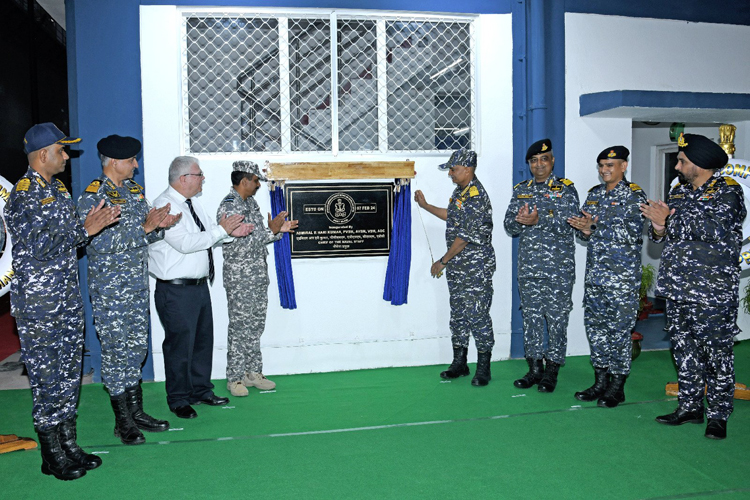
On February 10, 2024, the Chief of the Naval Staff Admiral R. Hari Kumar inaugurated the Integrated Underwater Harbour Defence and Surveillance System (IUHDSS) at the Andaman & Nicobar Command (ANC). IUHDSS is a state-of-the-art, multi-sensor system that utilises a network of radars, sonar equipment, and electro-optical sensors to create a comprehensive picture of the maritime environment surrounding Port Blair, which allows the Indian Navy to - detect and track underwater threats; monitor surface activity, and; improve situational awareness.
IUHDSS is a state-of-the-art, multi-sensor system that utilises a network of radars, sonar equipment, and electro-optical sensors to create a comprehensive picture of the maritime environment surrounding Port Blair.
This advanced system boosts the defence capabilities of Port Blair, enhancing its ability to detect and identify both underwater and surface threats. The system can identify submarines, swimmer delivery vehicles, and other underwater threats at a safe distance, providing adequate response time. It can track and identify surface vessels, ensuring the security of the harbour from potential attacks or unauthorised intrusions. Integrating data from multiple sensors the system provides a real-time picture of the harbour environment, enabling commanders to make informed decisions quickly and effectively.
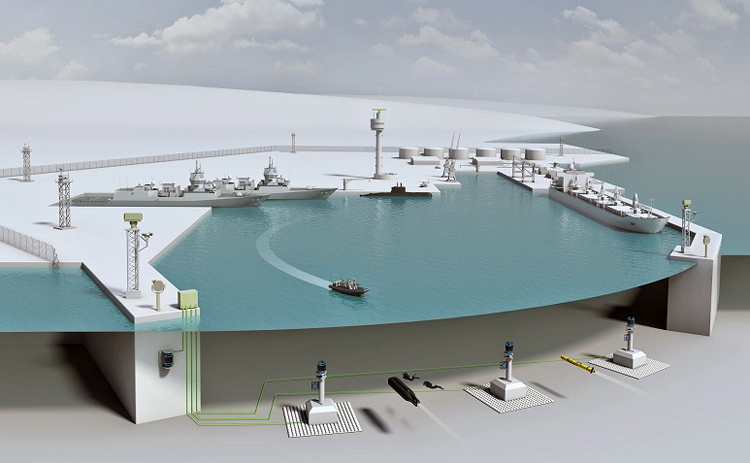
The IUHDSS is an extremely high-tech monitoring system developed by the top FC Israeli Firm - Elbit System. The system is reportedly installed at a location south of Port Blair at a choke point from where the RADAR and SONAR signatures of any platform (on water or underwater) when it crosses the Malacca Straits can be tracked by the system.
Concurrently, news reports of February 11, 2024, indicated that the Indian Navy plans to shield its frontline warships against aerial threats with the indigenous Naval Anti-Drone System (NADS) in a phased manner. This announcement was made by the Chief of the Naval Staff Admiral R. Hari Kumar during interaction with media onboard survey ship INS 'Sandhayak' after it was commissioned into the Indian Navy by Defence Minister Rajnath Singh on February 3, 2024, at the naval dockyard in Vizag.
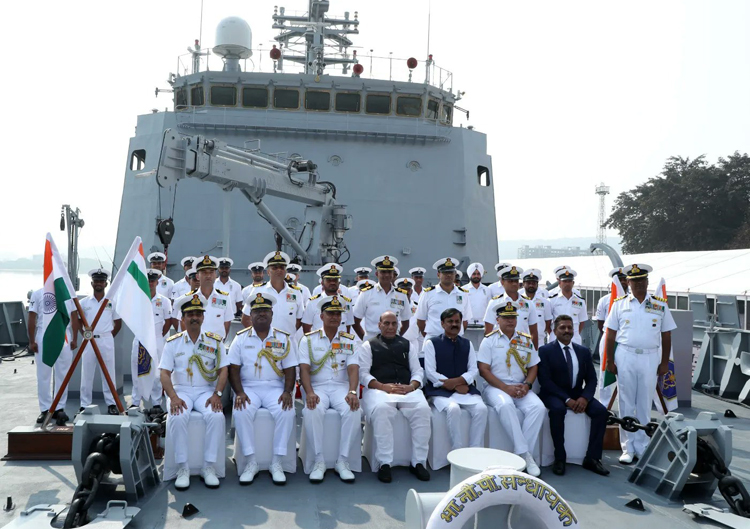
The NADS, jointly developed by the Defence Research and Development Organisation (DRDO) and Bharat Electronics Limited (BEL), is being manufactured by BEL. It is the first indigenously developed anti-drone system to be inducted into the Indian Armed Forces. Multiple Units of BEL, namely Bengaluru, Hyderabad, Pune and Machlipatanam; and DRDO Labs, namely Electronics & Radar Development Establishment (LRDE), Bengaluru; Defence Electronics Research Laboratory (DLRL) and Centre for High Energy Systems and Sciences (CHESS), Hyderabad and Instruments Research & Development Establishment (IRDE), Dehradun; in close collaboration with the Indian Navy, were involved in the making of this fully indigenous system, as part of the Atmanirbhar Bharat initiative to counter drone threats of adversaries.
The NADS, jointly developed by the Defence Research and Development Organisation (DRDO) and Bharat Electronics Limited (BEL), is being manufactured by BEL.
On August 31, 2021, the Indian Navy had signed a contract with Navratna Defence PSU Bharat Limited (BEL) for supply of NADS with both hard kill and soft kill capabilities in New Delhi on August 31, 2021. The contract was signed in the presence of senior Naval officers and DRDO representatives. The Indian Navy has provided consistent support leading to the development of NADS.
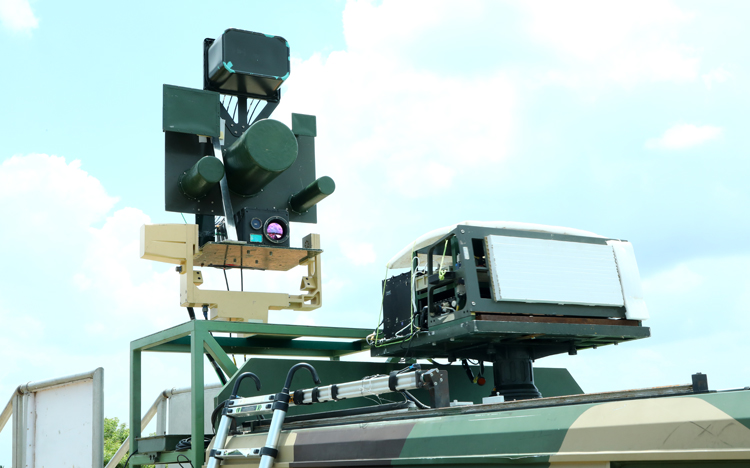
The NADS was first deployed to provide security cover during the Modi-Trump road show in Ahmedabad, Gujarat during the visit of the then POTUS Donald Trump on February 24, 2020. Subsequently, NADS was also deployed to cover the Republic Day Parade on January 26, 2021, as well as during Prime Minister Narendra Modi's Independence Day Address to the Nation from the ramparts of the Red Fort on August 15, 2021.
The anti-drone system uses the help of Radar, Electro-optical/infrared (EO/IR) sensors and Radio Frequency (RF) detectors to detect and jam the micro drones. The RF/Global Navigation Satellite System (GNSS) detects the frequency which is being used by the controller and the signals are then jammed. The system provides for both 'soft kill' and 'hard kill' options to the Indian Armed Forces to tackle fast-emerging aerial threats. Both the static and mobile versions of NADS will be supplied to the Indian Navy within a short time from the signing of contract.
The Shakti EW System is capable of accurately intercepting electronic emissions and implementing counter measures in dense electromagnetic environments.
The NADS can instantly detect and jam micro drones and use a laser-based kill mechanism to terminate targets. It will be an effective all-encompassing counter to the increased drone threat to strategic naval installations. Senior civil and military officials of the Ministry of Defence (MoD) and BEL were present on the occasion. The BEL is to sign similar contracts with the Army and Air Force also. It may be recalled that in June 2021, two drones by suspected Pakistan-based terrorists dropped some explosives at the Indian Air Force (IAF) base in Jammu.
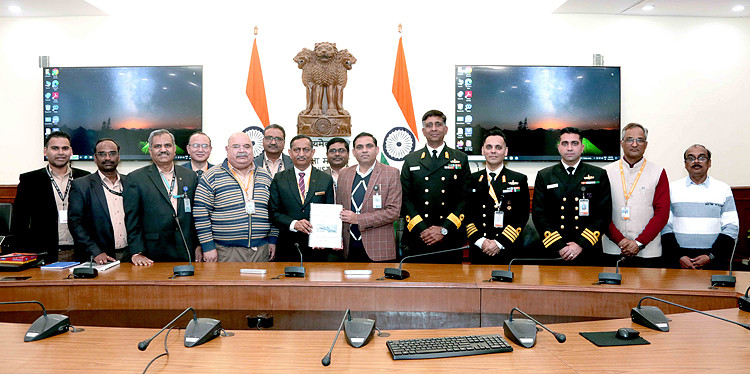
On February 13, 2024, the MoD signed a contract in New Delhi with BEL for procurement of 11 x Shakti Electronic Warfare (EW) Systems along with associated equipment and accessories for the Indian Navy under Buy (Indian- IDDM) category at a cost of ₹2,269.54 crore. Indigenously designed, developed and manufactured, the Shakti EW System is capable of accurately intercepting electronic emissions and implementing counter measures in dense electromagnetic environments.
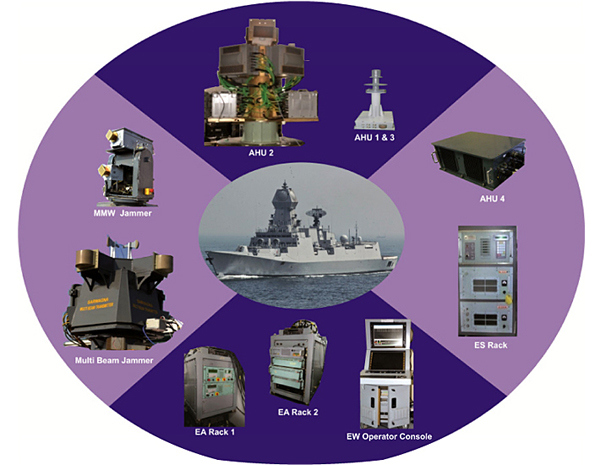
The Shakti EW System will be installed on-board capital warships of the Indian Navy. According to a report by the Press Information Bureau (PIB), the project will generate employment of two and half lakh man-days over a period of four years with participation of more than 155 industry partners including MSMEs. This system is intended to supersede the Navy's older EW Systems. Incorporating wideband Electronic Support Measures (ESM) and Electronic Counter Measures (ECM), the Shakti system is designed to defend navy ships against missile threats.
Deployment of both the NADS and Shakti systems across Indian frontline warships enhances the Indian Navy's combat preparedness against evolving aerial threats. It also establishes India as a leader in developing advanced anti-drone and anti-missile technologies.





